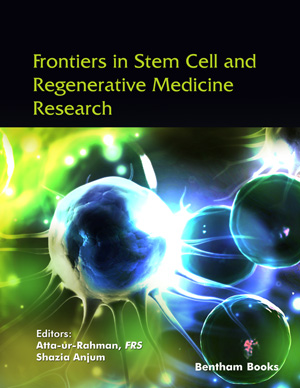
Abstract
In the last two decades, fetal amniotic fluid stem cells progressively attracted attention in the context of both basic research and the development of innovative therapeutic concepts. They exhibit broadly multipotent plasticity with the ability to differentiate into cells of all three embryonic germ layers and low immunogenicity. They are convenient to maintain, highly proliferative, genomically stable, non-tumorigenic, perfectly amenable to genetic modifications, and do not raise ethical concerns. However, it is important to note that among the various fetal amniotic fluid cells, only c-Kit+ amniotic fluid stem cells represent a distinct entity showing the full spectrum of these features. Since amniotic fluid additionally contains numerous terminally differentiated cells and progenitor cells with more limited differentiation potentials, it is of highest relevance to always precisely describe the isolation procedure and characteristics of the used amniotic fluid-derived cell type. It is of obvious interest for scientists, clinicians, and patients alike to be able to rely on up-todate and concisely separated pictures of the utilities as well as the limitations of terminally differentiated amniotic fluid cells, amniotic fluid-derived progenitor cells, and c-Kit+ amniotic fluid stem cells, to drive these distinct cellular models towards as many individual clinical applications as possible.
Keywords: Amniotic fluid stem cells, fetal stem cells, amniotic fluid, c-Kit, basic research, cell therapy.
Graphical Abstract
[http://dx.doi.org/10.1016/S0140-6736(97)02174-0] [PMID: 9274585]
[http://dx.doi.org/10.1038/nrg.2016.97] [PMID: 27629932]
[http://dx.doi.org/10.1056/NEJMra1705345] [PMID: 30067923]
[http://dx.doi.org/10.1007/978-1-4684-3438-5_4]
[http://dx.doi.org/10.1016/S0091-679X(08)61362-X] [PMID: 6752650]
[http://dx.doi.org/10.1038/sj.jp.7211290] [PMID: 15861199]
[http://dx.doi.org/10.1387/ijdb.092935md] [PMID: 20446274]
[http://dx.doi.org/10.1002/pmic.200300654] [PMID: 15048995]
[http://dx.doi.org/10.1007/s12015-007-9003-z] [PMID: 17955390]
[http://dx.doi.org/10.1002/stem.2553] [PMID: 28009066]
[http://dx.doi.org/10.4103/bc.bc_23_17] [PMID: 30276320]
[http://dx.doi.org/10.2174/1574888X13666180115093800] [PMID: 29336267]
[http://dx.doi.org/10.1007/BF00295475] [PMID: 6174407]
[http://dx.doi.org/10.1093/oxfordjournals.bmb.a071847] [PMID: 6357346]
[http://dx.doi.org/10.1136/bmj.2.6146.1186] [PMID: 82463]
[http://dx.doi.org/10.1136/bmj.281.6253.1456] [PMID: 7002257]
[http://dx.doi.org/10.1007/BF00274694] [PMID: 7016720]
[http://dx.doi.org/10.1016/S0140-6736(73)92720-7] [PMID: 4127367]
[http://dx.doi.org/10.1515/jpm-2019-0262] [PMID: 31494640]
[http://dx.doi.org/10.1203/00006450-197408000-00003] [PMID: 4844525]
[http://dx.doi.org/10.1007/BF00394190] [PMID: 1176144]
[http://dx.doi.org/10.1053/jpsu.2001.27945] [PMID: 11685697]
[http://dx.doi.org/10.1001/jama.286.17.2083-JMN1107-2-1] [PMID: 11694128]
[http://dx.doi.org/10.1002/sctm.18-0018] [PMID: 30085416]
[http://dx.doi.org/10.5966/sctm.2013-0194] [PMID: 24692589]
[http://dx.doi.org/10.1016/j.stem.2019.06.010] [PMID: 31271751]
[http://dx.doi.org/10.1016/S0092-8674(00)81692-X] [PMID: 10647940]
[http://dx.doi.org/10.1172/JCI138645] [PMID: 32452833]
[http://dx.doi.org/10.1016/j.stem.2020.02.011] [PMID: 32142662]
[http://dx.doi.org/10.1038/s41573-020-0064-x] [PMID: 32612263]
[http://dx.doi.org/10.1016/j.stem.2019.10.001] [PMID: 31703770]
[http://dx.doi.org/10.1016/j.stem.2020.09.014] [PMID: 33007237]
[PMID: 8239855]
[http://dx.doi.org/10.1016/j.juro.2009.11.006] [PMID: 20096867]
[http://dx.doi.org/10.1016/S1472-6483(10)60111-3] [PMID: 19281660]
[http://dx.doi.org/10.3727/096368910X539074] [PMID: 21054947]
[http://dx.doi.org/10.1016/j.ajog.2015.12.061] [PMID: 26767797]
[http://dx.doi.org/10.1016/j.jpedsurg.2017.03.027] [PMID: 28363468]
[http://dx.doi.org/10.1093/humrep/deh279] [PMID: 15105397]
[http://dx.doi.org/10.1089/scd.2006.15.719] [PMID: 17105407]
[http://dx.doi.org/10.1089/scd.2007.0036] [PMID: 18047393]
[http://dx.doi.org/10.1016/j.jpedsurg.2007.01.031] [PMID: 17560205]
[http://dx.doi.org/10.1016/j.juro.2006.09.103] [PMID: 17162093]
[http://dx.doi.org/10.1016/j.ajog.2003.12.014] [PMID: 15295384]
[http://dx.doi.org/10.1038/sj.cr.7310043] [PMID: 16617328]
[http://dx.doi.org/10.1002/jnr.20828] [PMID: 16555279]
[http://dx.doi.org/10.1186/1472-6750-9-9] [PMID: 19220883]
[http://dx.doi.org/10.1093/humrep/deg279] [PMID: 12832377]
[http://dx.doi.org/10.2217/rme.09.12] [PMID: 19438317]
[http://dx.doi.org/10.3892/ijmm.16.6.987] [PMID: 16273276]
[http://dx.doi.org/10.1095/biolreprod.105.046029] [PMID: 16306422]
[http://dx.doi.org/10.1111/j.1365-2184.2007.00414.x] [PMID: 17227297]
[http://dx.doi.org/10.1038/nbt1274] [PMID: 17206138]
[http://dx.doi.org/10.1038/onc.2009.405] [PMID: 19935716]
[http://dx.doi.org/10.1007/s10735-007-9118-1] [PMID: 17668282]
[http://dx.doi.org/10.1111/j.1365-2184.2007.00478.x] [PMID: 18021180]
[http://dx.doi.org/10.1182/blood-2008-10-182105] [PMID: 19221036]
[http://dx.doi.org/10.4061/2011/715341] [PMID: 21437196]
[http://dx.doi.org/10.1371/journal.pone.0107004] [PMID: 25221943]
[http://dx.doi.org/10.5966/sctm.2015-0262] [PMID: 27025692]
[http://dx.doi.org/10.1038/nprot.2010.74] [PMID: 20539284]
[http://dx.doi.org/10.1038/nprot.2013.011] [PMID: 23449254]
[http://dx.doi.org/10.1371/journal.pone.0013703] [PMID: 21060825]
[http://dx.doi.org/10.1089/cell.2009.0077] [PMID: 20677926]
[http://dx.doi.org/10.1016/j.cell.2012.09.032] [PMID: 23084400]
[http://dx.doi.org/10.1038/mt.2012.117] [PMID: 22760542]
[http://dx.doi.org/10.1089/scd.2012.0267] [PMID: 23050522]
[http://dx.doi.org/10.1016/j.ymthe.2016.11.014] [PMID: 28153093]
[http://dx.doi.org/10.1038/s41467-017-00661-x] [PMID: 28928383]
[http://dx.doi.org/10.1016/j.molmed.2013.01.001] [PMID: 23337352]












